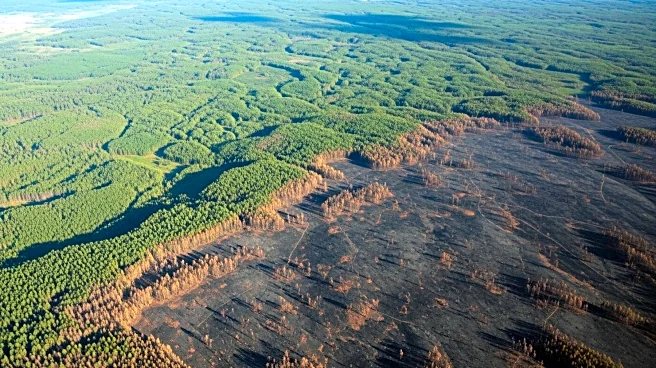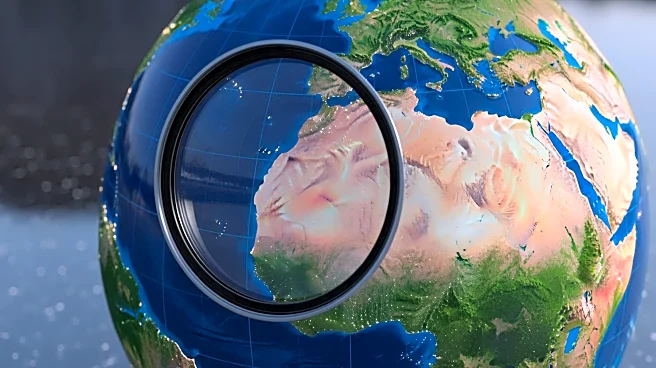What's Happening?
NASA's Landsat satellites play a crucial role in disaster management by providing detailed observations of Earth's surface before and after natural disasters. These satellites offer a comprehensive view that aids in assessing risks, mapping damage, and planning
recovery efforts. Landsat's data, which includes 185-kilometer-wide images with 30-meter resolution, is instrumental in visualizing impacts that are not visible to the human eye, such as heat from fires and lava flows from volcanic eruptions. Since 1972, Landsat has been recording global ecosystem conditions, with the U.S. Geological Survey providing this data to the public at no cost. The latest addition, Landsat 9, launched in 2021, continues this legacy. The data is used by various agencies, including the U.S. Forest Service, to manage fire recovery and by hydrologists to predict flood hazards.
Why It's Important?
The data provided by Landsat satellites is vital for effective disaster management, offering insights that help mitigate the impact of natural disasters. By enabling precise mapping of affected areas, Landsat data supports emergency response teams in prioritizing recovery efforts and allocating resources efficiently. This capability is particularly important as climate change increases the frequency and severity of natural disasters. Landsat's ability to track changes in vegetation and water resources also aids in managing drought conditions, which are considered the most severe natural hazard worldwide. The information gathered from Landsat is crucial for policymakers, researchers, and emergency responders in making informed decisions that can save lives and reduce economic losses.
What's Next?
Landsat's ongoing mission will continue to provide valuable data for disaster management, with future enhancements likely to improve the resolution and scope of observations. As climate change progresses, the demand for accurate and timely data will increase, prompting further integration of Landsat data into global disaster response strategies. Agencies may expand their use of Landsat data to develop more sophisticated models for predicting and managing natural disasters. Additionally, collaborations between NASA and international organizations could enhance global disaster preparedness and response capabilities.
Beyond the Headlines
The ethical implications of using satellite data for disaster management are significant, as it raises questions about privacy and data accessibility. Ensuring that Landsat data remains freely available to the public is crucial for maintaining transparency and enabling widespread use in disaster response. Furthermore, the cultural impact of Landsat's observations can be profound, as they provide a visual record of environmental changes that can influence public perception and policy regarding climate change and disaster preparedness.














